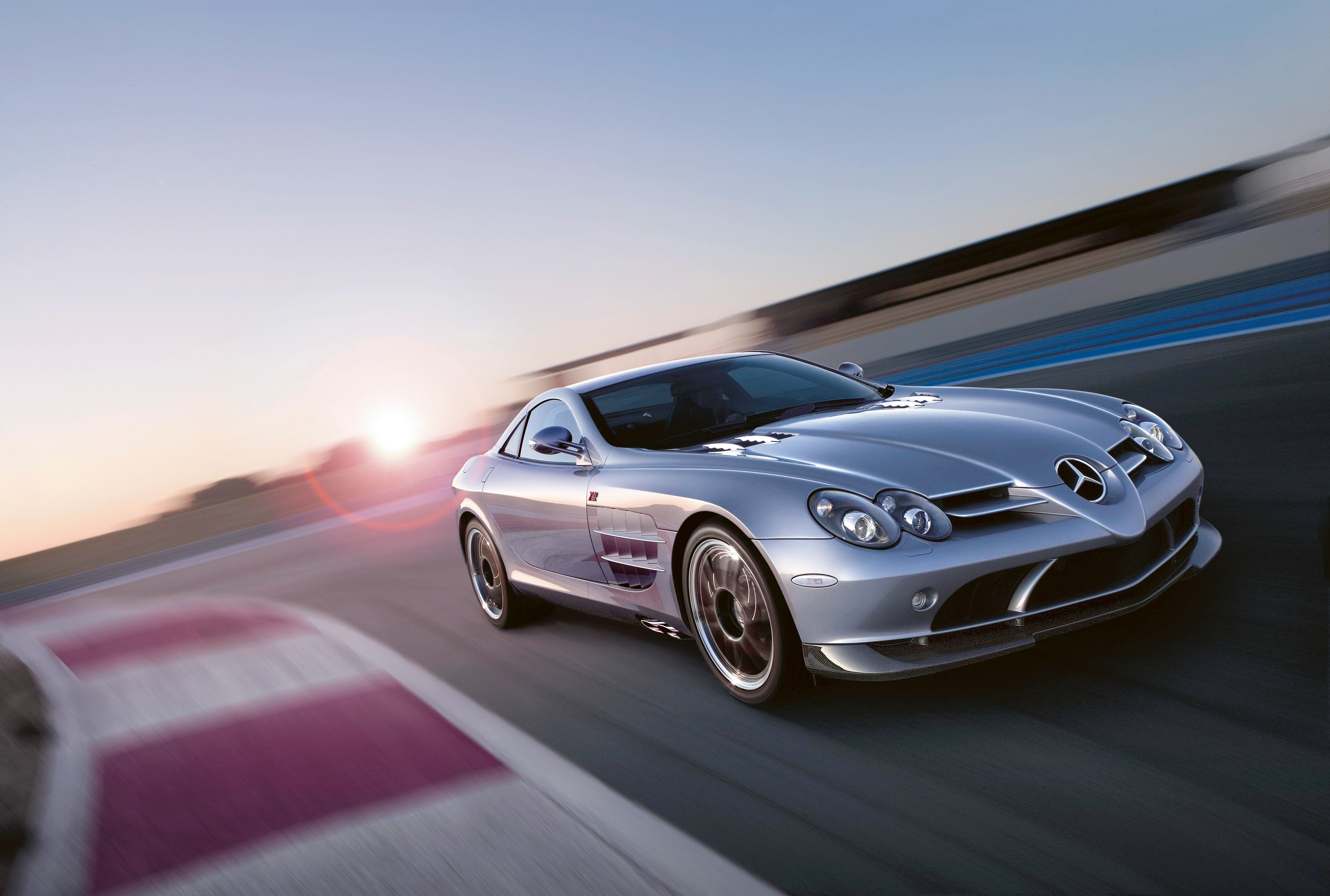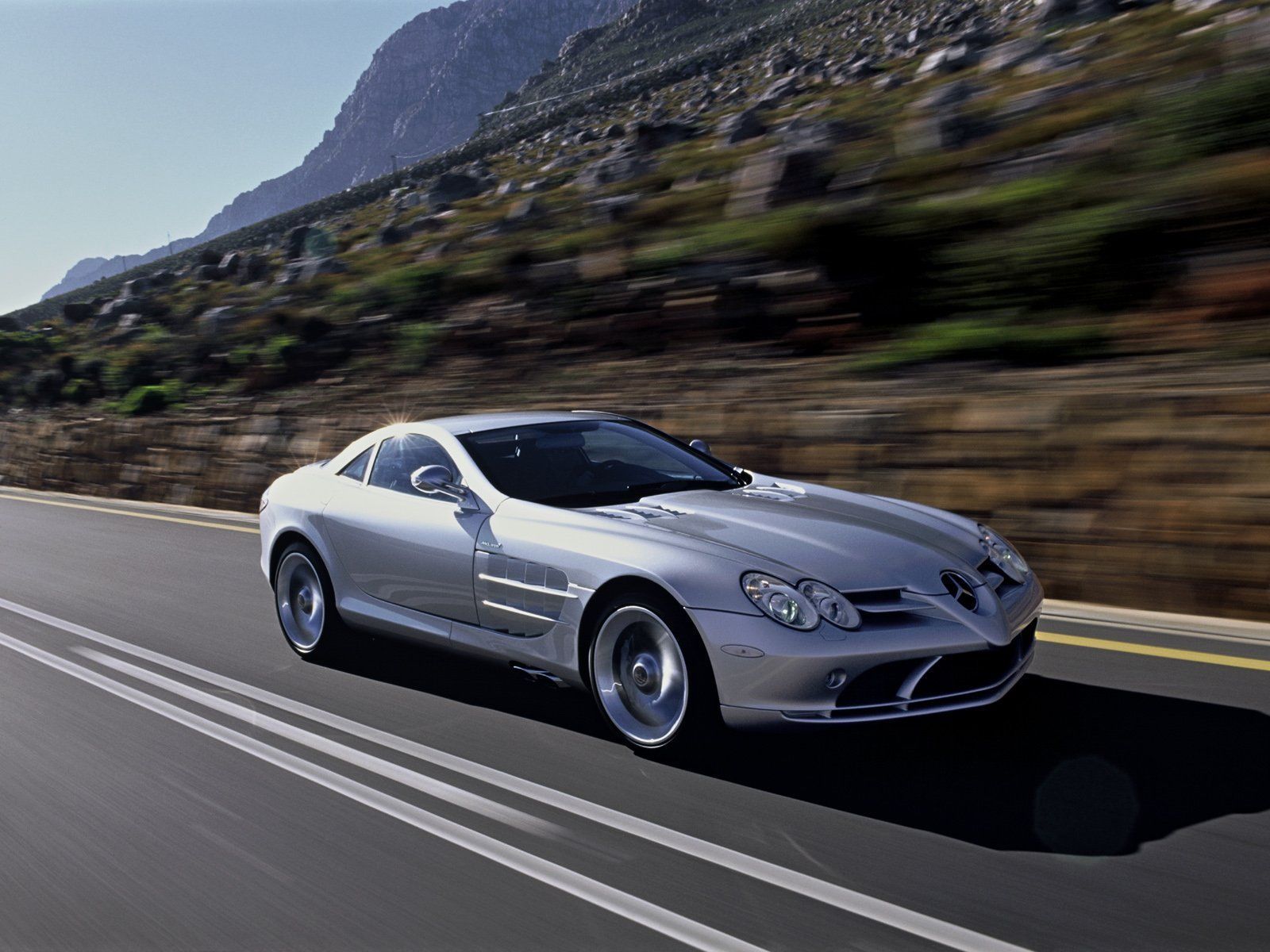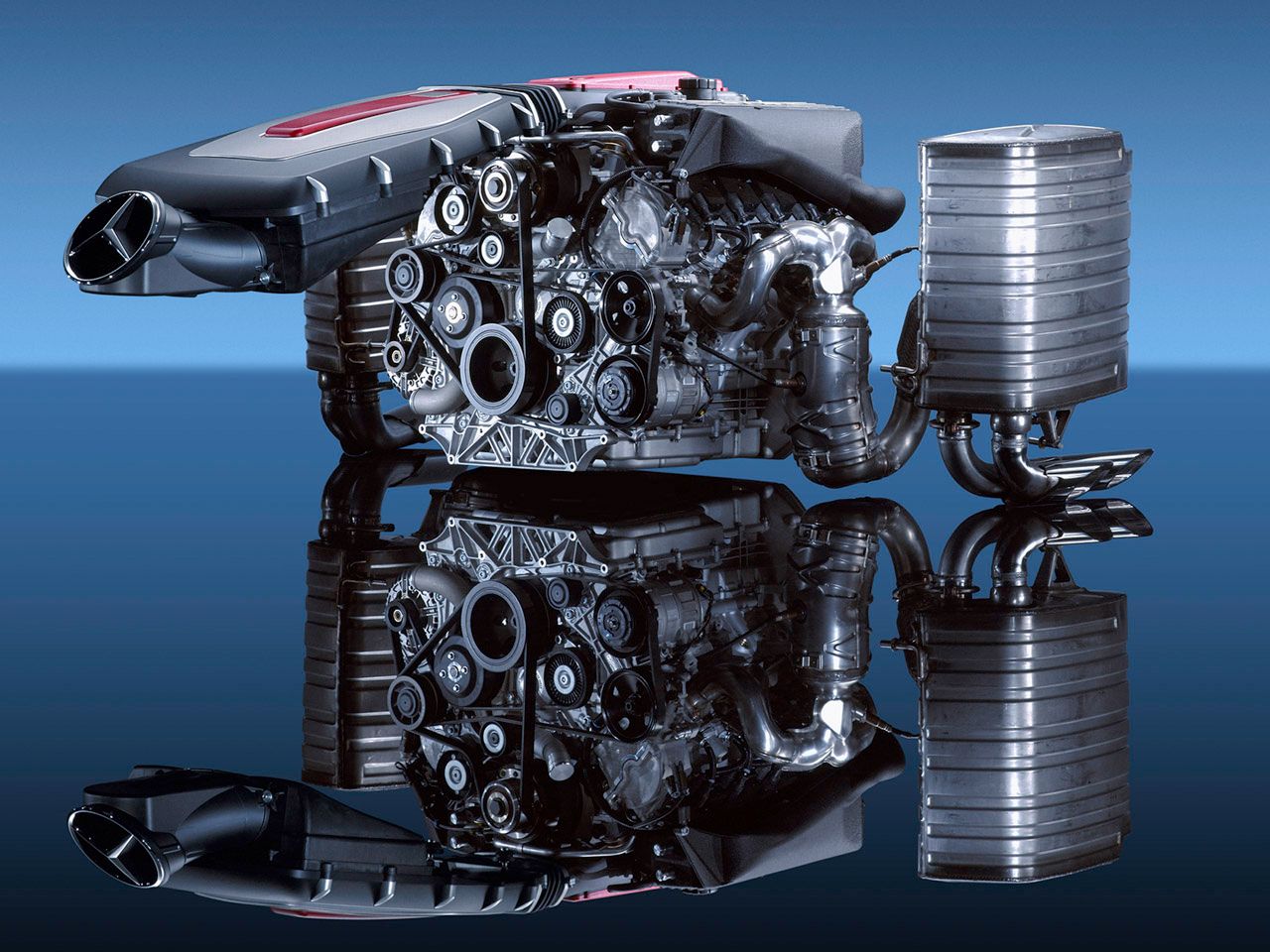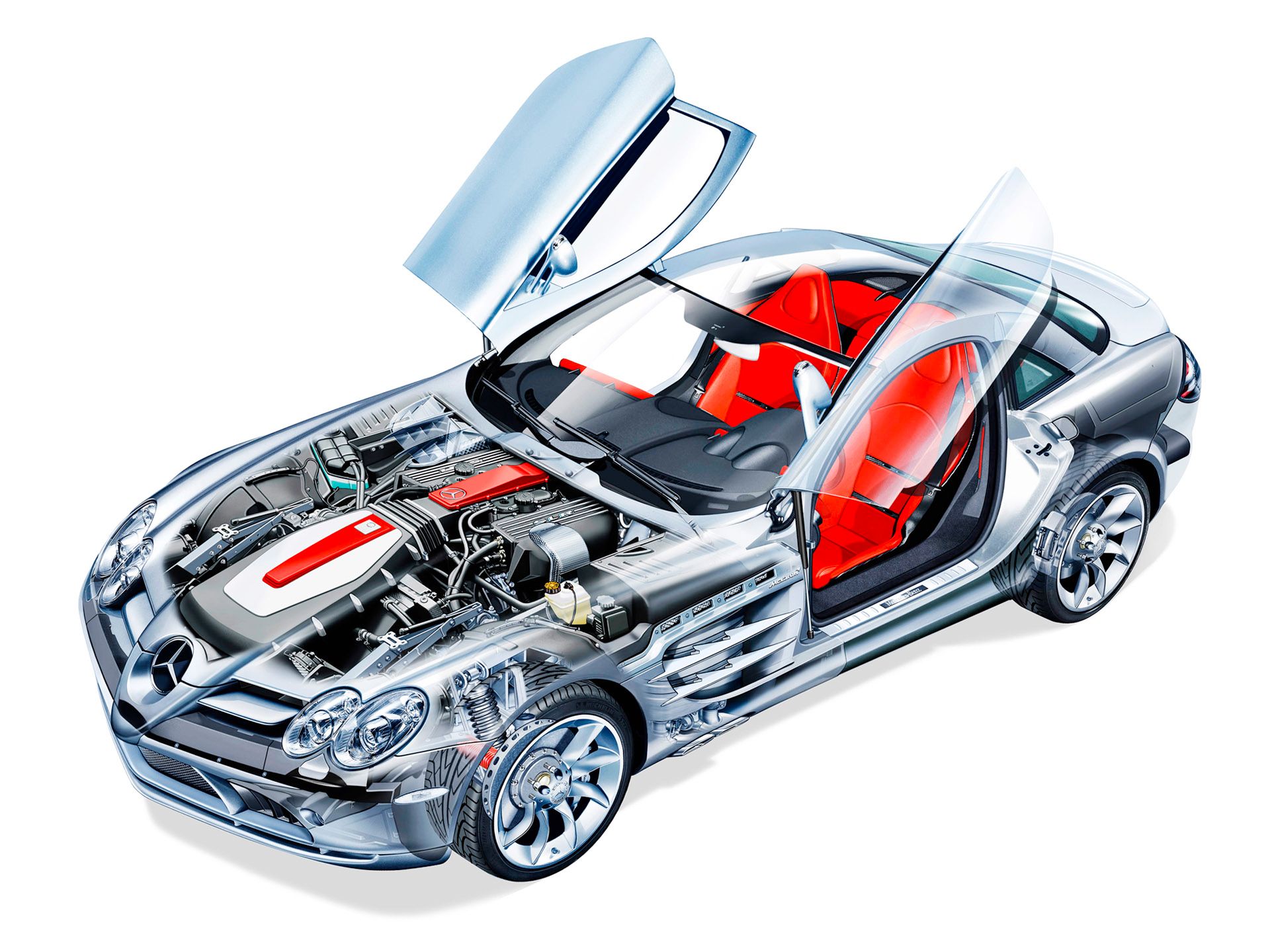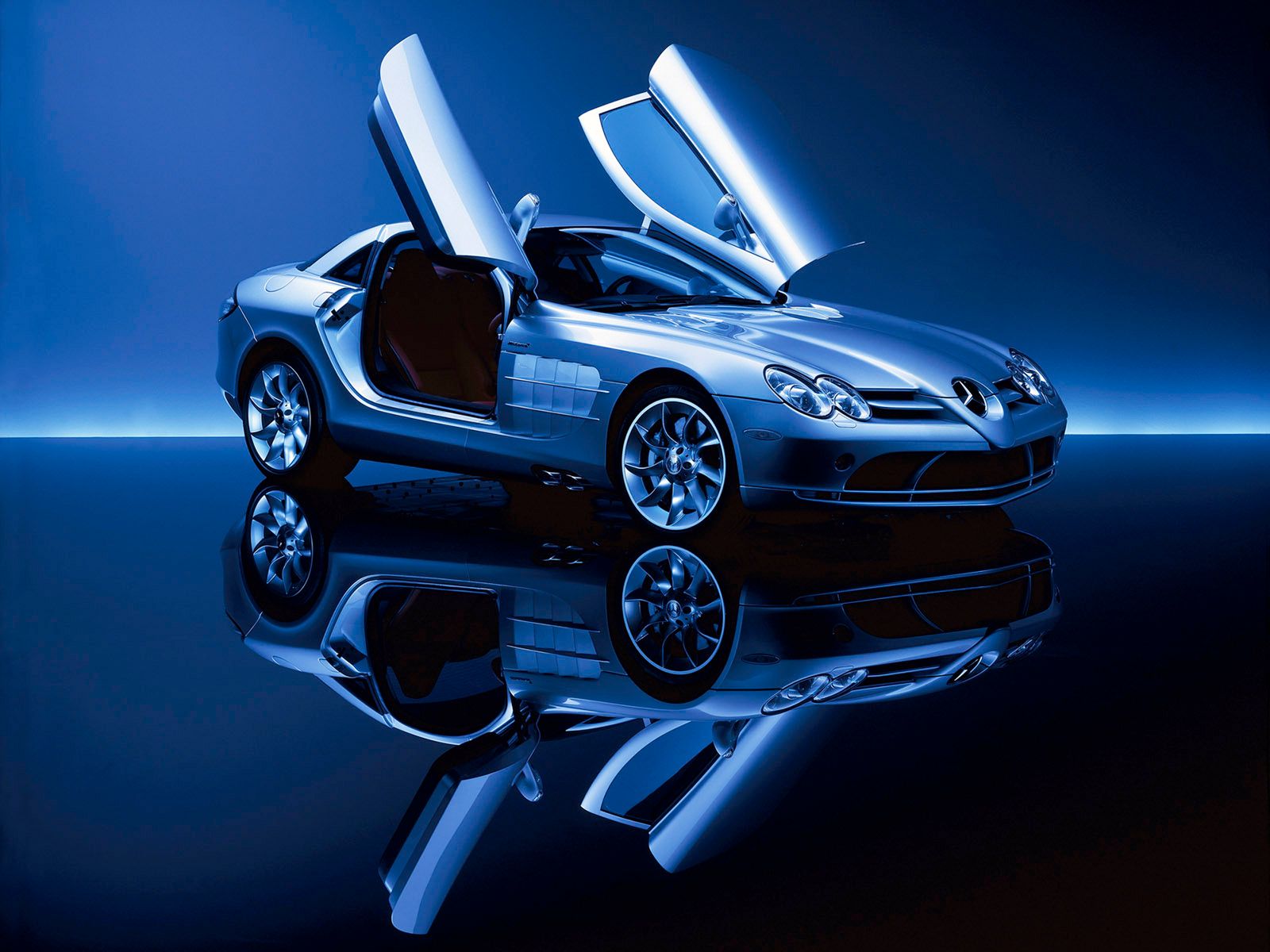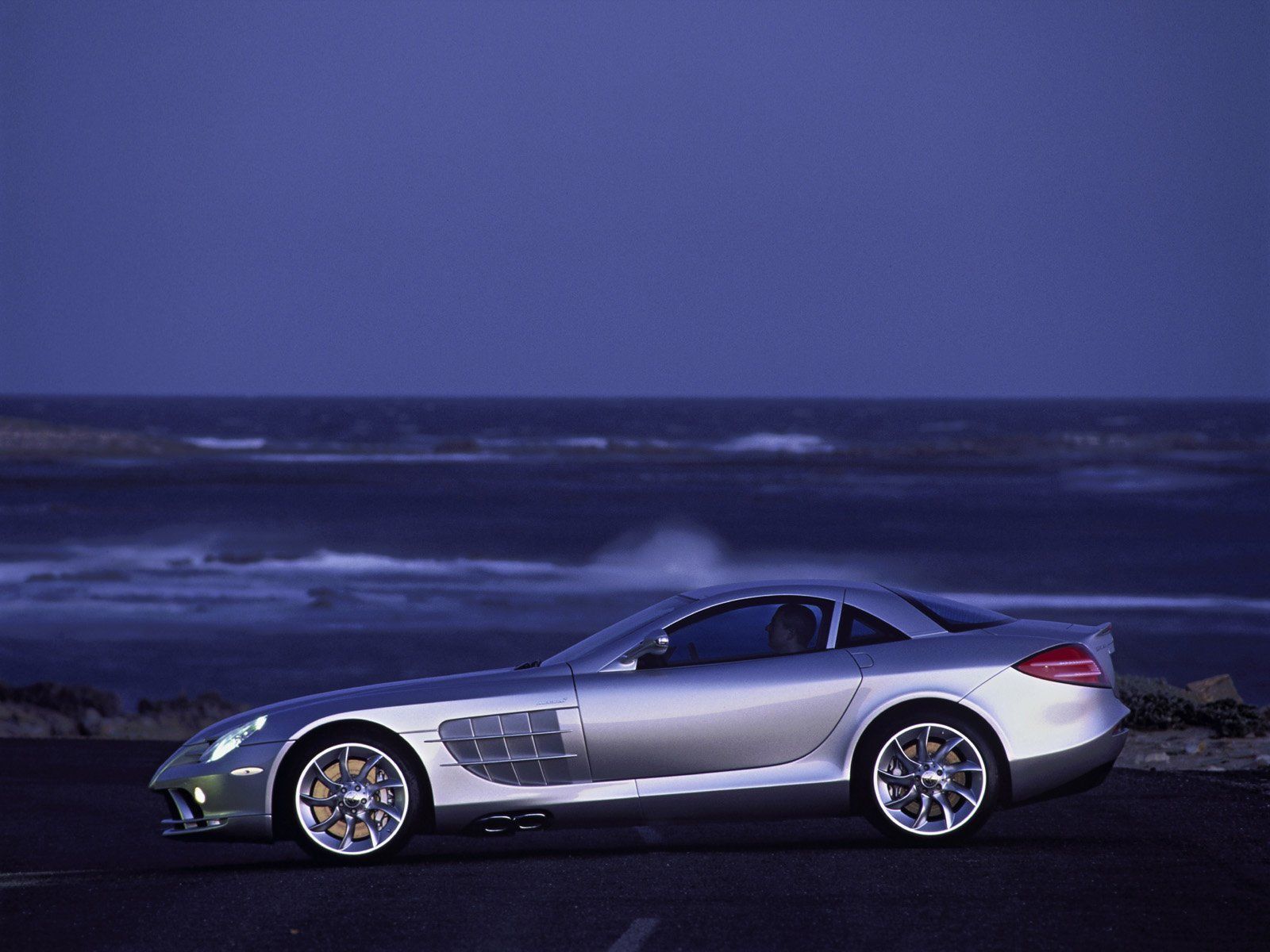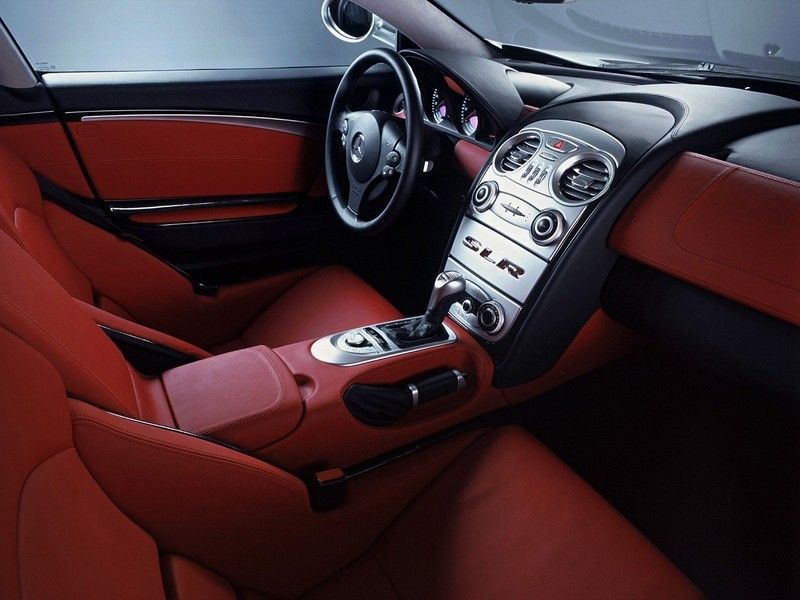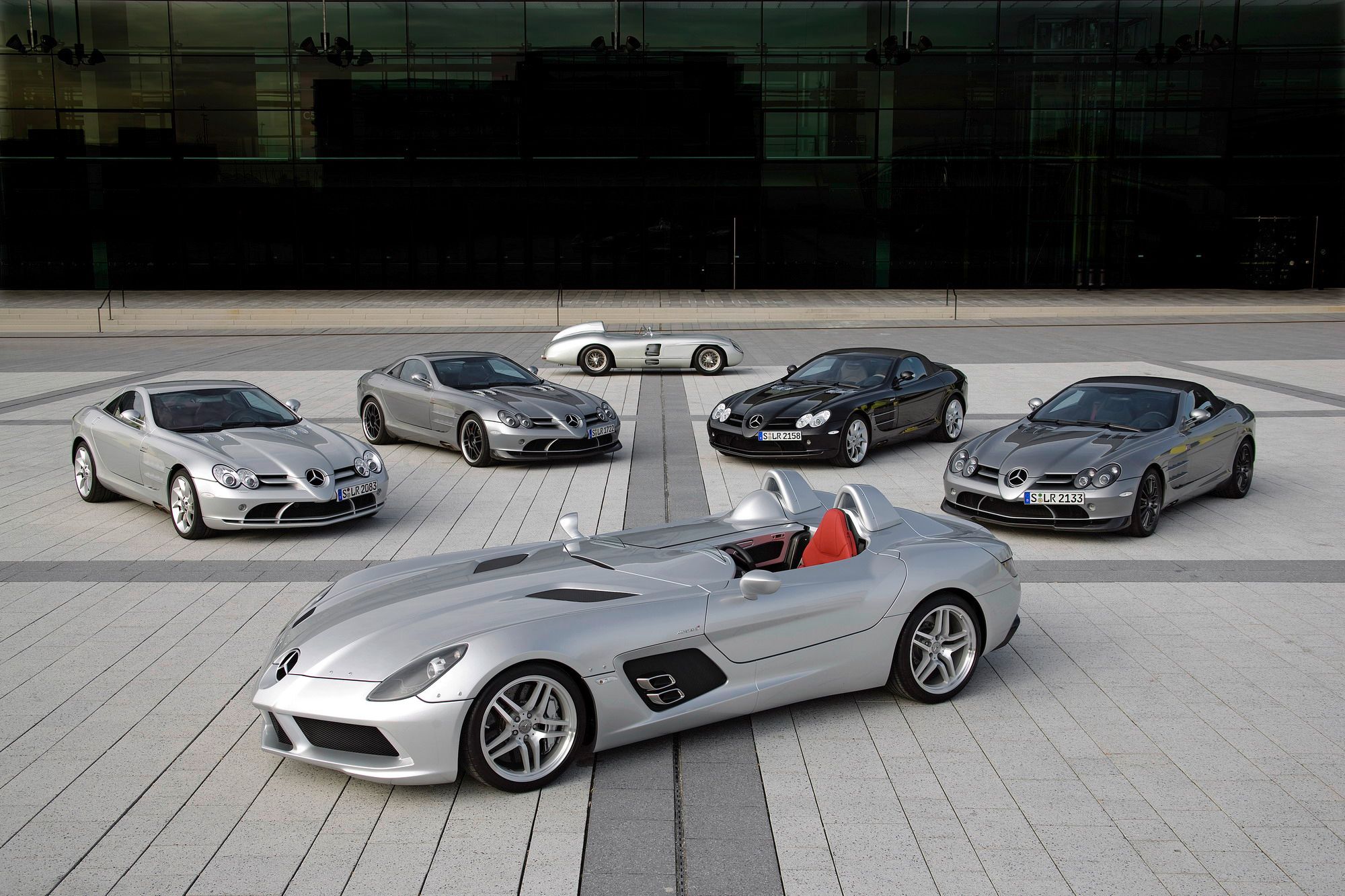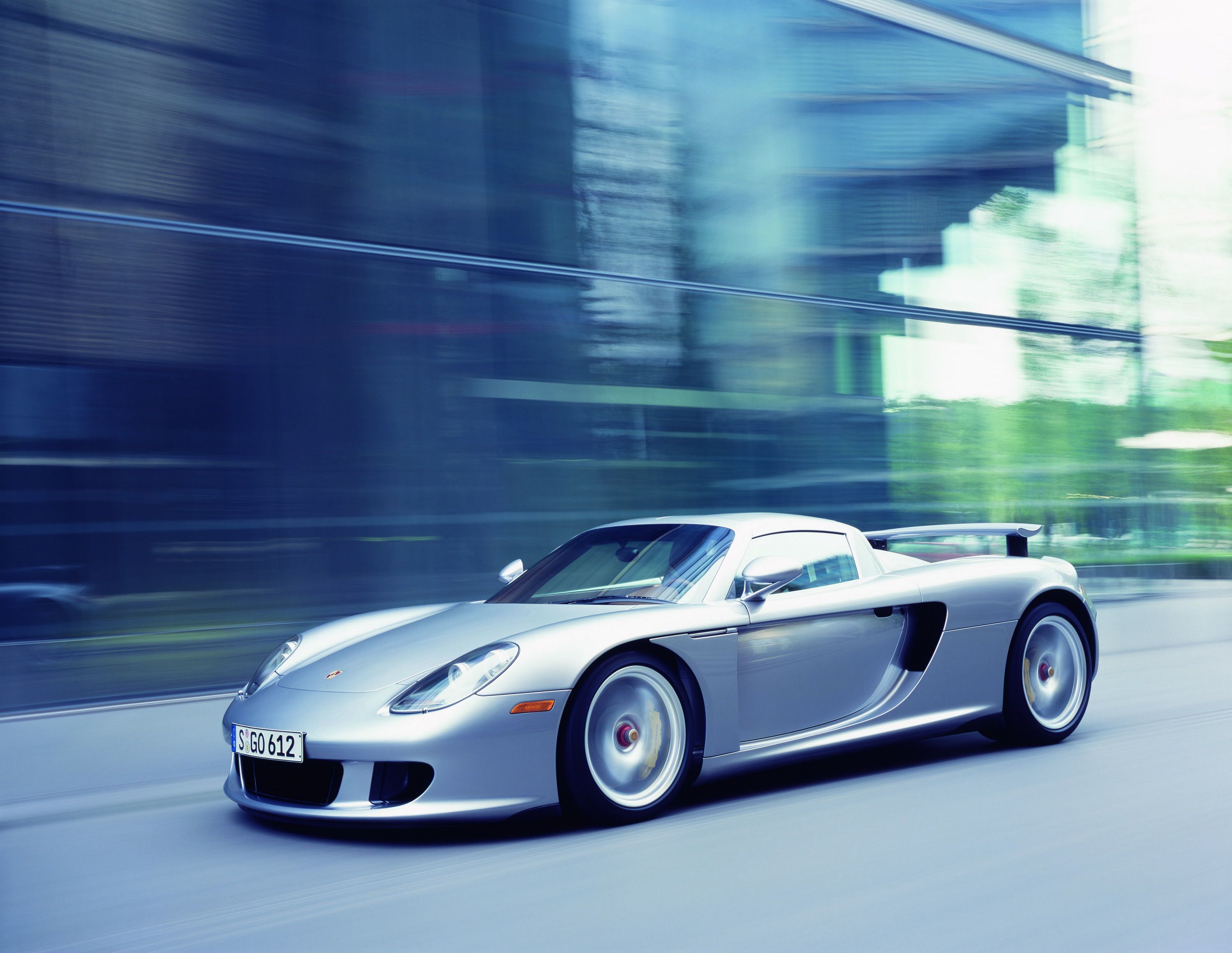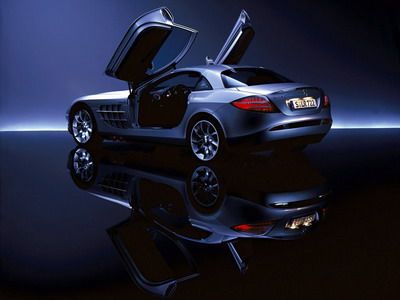This - ladies and gentlemen, is the Mercedes Benz SLR McLaren, a grand touring supercar produced between 2004 and 2009. It is a car that goes to show, of just what’s possible when you put two of the mightiest names in the auto business together. The SLR of course stands for 'Sport Leicht Rennsport' in German and translates to Sport Light Racing in English and is the modern-day interpretation thats a testament to the Silver Arrows that dominated road races like the Mille Miglia 1000, at the hands of the legendary Sir Stirling Moss in the mid-50s.
Around the turn of the century, both Mercedes and McLaren wanted to celebrate their success in F1 with a halo supercar. Mercedes wanted to reconnect with its rich heritage in motorsport with a road-going racer and it chose McLaren as its partner to bring this vision to life. Work on this special project began as early as 1998 with Mclaren joining in '99, refining the Vision SLR concept further. Their collaborative efforts eventually culminated in the 2004 Mercedes Benz SLR McLaren.
Mercedes Benz SLR McLaren Performance and Capability
If you thought that the SLR was just a grown-up SL of its day, think again. As a car that was to represent the epitome of performance, both automakers pooled substantial resources and their vast technical motor racing expertise into the series development of this extremely special automobile.
After all, this was a car that had to live up to the prestige associated with the revered SLR badge. In fact, so special was this project, that Mercedes entrusted McLaren to build the SLR at their then-new MTC in Woking, England.
Let's begin by talking about what’s lurking under that long hood. Under it, you’ll find the SLR's party piece, a hand-built AMG 5.4-liter Supercharged V-8 engine with twin intercoolers that puts out a healthy 617 horsepower and 575 pound-feet of torque available from as low as 3250 rpm. Now by modern standards, that might not seem like a lot, but for the time, these numbers were comparable to other mid-engined supercars.
This potent engine incorporates a water-based charge-air cooling system, dry-sump lubrication, and four metal catalytic converters. As for the noise the SLR generates, it is unlike anything else on the road. The V-8 burble coming out of the side-mounted exhausts is nothing short of the sound of thunder.
Coming to the transmission, although Merc did have the 7G-Tronic Auto at their disposal, that unit simply couldn’t handle the SLR's massive torque. So instead, the engineering team went with a more basic AMG SPEEDSHIFT R five-speed automatic transmission that sends power, exclusively to the rear wheels.
But don’t dismiss this gearbox just yet, because the lightning-fast shifts were good enough to get this beast of a machine to 60 mph in 3.8 seconds, and the SLR can go on to a top speed of an impressive 207 miles per hour. Also, the sleek design and a low power-to-weight ratio of 5.1:1 means, it has the potential to run the quarter mile in the mid-11s.
Expanding on that transmission, you get three distinct driving modes:
- Comfort
- Sport
- Manual
When in "Manual" mode, you further have the option of using the selector lever's Touchshift button or the steering-wheel-mounted paddle shifters to move through the car's five ratios. To further enhance the sportiness of the shifts, the driver can choose between three shift levels in this mode:
- Sport
- SuperSport
- Race
The SLR also benefits from a front-mid engine layout, which positions the bulk of the powertrain, behind the front axle and near the vehicle's center of gravity. Combined with a motor racing-inspired suspension setup, it guarantees pinpoint handling and sensational ride quality, despite its size.
Another area where the SLR excels is its exceptional braking performance, which is further enhanced by the automatic air brake on the tailgate. Made from carbon fiber reinforced ceramics, the discs drew from proven their worth in motorsports. Thanks to their great fade resistance and outstanding deceleration values, you get top-class performance that complements the advanced safety technologies.
If you are brave enough to tame this beast and do decide to let your hair loose, switch off the ESC, and the SLR will reward you with some tail-happy action all day long.
Exterior Design
The exterior design masterfully combined the refined, avant-garde design language of the latest Mercedes passenger car models at the time, along with iconic styling cues from the legendary SLR race cars of the 1950s.
While the original Vision SLR concept looked like nothing more than a Super SL, it was in fact renowned automotive designer, Gordon Murry who considerably refined the design of the SLR. Inspired by Formula 1's monocoque designs, the SLR, like the McLaren-Mercedes Formula 1 cars of the time, featured a body composed of lightweight carbon-fiber materials that were also part of the safety structure. As a result, the whole car just weighed 3,898 pounds.
Murray got the proportions of the SLR, just right. A longer hood made way for the side-mounted exhaust that would facilitate a flat floor. Elements like the gull-wing doors, the quad-headlights, and f1 inspired nose made it to the production version.
Both Mercedes-Benz and McLaren collaborated to develop this model's superior aerodynamics. The final design saw the addition of more aggressive hood vents and side strakes to help that V-8 breathe better. A design hallmark of the SLR, the signature side pipes are another outcome of its aerodynamic underbody design. A traditional exhaust gas system might well have ruined the car's sleek profile.
The Mercedes-Benz SLR McLaren comes with sleek ten-spoke 18-inch light-alloy wheels as standard equipment. You get different-sized tires on the front and rear wheels. Optional equipment includes larger 19-inch wheels with an asymmetrical turbine design.
At the rear, Murray raised the tail end considerably so that the SLR offers better downforce. The tail features an adjustable spoiler as part of the SLR's active aerodynamics. Under heavy braking, the spoiler raises to an angle of 65 degrees, acting as an airbrake by increasing aerodynamic drag. After intensive testing in a wind tunnel, the SLR got a smooth underside along with a unique six-channel diffusor. Both are standard Formula 1 design elements.
As for exterior colors, you could pick from thirteen unique shades with Crystal Galaxite Black and Crystal Laurite Silver; the debut colors. Both the monochromatic "Pure" paint and the textured "Crystal" paints were available in these tones. Overall, with its long hood, compact passenger cell, and stubby rear, the SLR’s design is dramatic and timeless yet functional. It is a form that continues to look exciting to this day.
Interior Quality and Technology
Where the exterior design was all about outlandish style, the cabin is more mundane and normal. This is where they wanted the SLR to be a Mercedes first. That is - a cabin that holds its own for exceptionally high levels of utility and comfort.
Climb on board and you’re greeted to a sporty cockpit that features high-quality materials like leather, aluminum, and carbon fiber. You get individually padded carbon-frame seats, a multifunction steering wheel with paddles to manually control the gear shift and logically placed chronometer-style instruments.
The center console has very 2000s Merc climate vents, with a prominent SLR badge. This panel is also composed of controls for the gear-mode selectors as well as the air brake system. The test function is perfect if you want to pose while you’re sitting in traffic.
Also, Mercedes were thankfully smart not to clutter up the dash with a big screen, which would have aged the interior faster. Despite the lack of a display, you still get onboard navigation from the factory along with a premium Bose audio system and a Mercedes-branded mobile phone.
In addition to carbon and aluminum, the Mercedes designers included "Silver Arrow" leather. Created specifically for the SLR and it came in the iconic berry red of the original SLR race cars from the 1950s. Other color options included Black and Orion grey.
But by far, the most stand-out feature in the interior of the SLR is the fighter jet-style engine-starter button, that’s located under a flap on the gear selector lever. Flick that flap and at the push of a button, bring the 5.4-liter behemoth to life.
As for storage, while the cabin itself is pretty tight, you do get a trunk that offers just under 10 cubic feet of cargo volume. While it's not the best, it sure is more than what some of the mid-engined competition offered up at the time.
Mercedes Benz SLR McLaren Price and Availability
Over its nearly six-year production run, McLaren produced 2,157 examples of the SLR, of which anywhere between 600 and 700 units made it State-side. Aside from the coupe, the SLR was also available as a Roadster. A number of special editions based on the SLR saw the light of day. It includes sportier 722 edition, also available both in Coupe and Roadster 722 S body styles.
A special limited edition Stirling Moss variant with a Speedster body broke cover at the 2009 North American Autoshow after which production came to an end and the SLR was finally discontinued. Between 2011 and 2013, McLaren Special Operation (MSO) announced a special program for the SLR, where 25 lucky customers got the chance to enjoy revised bodywork, upgraded suspension, and a sports exhaust system over the standard model.
Coming to the prices for how much an SLR cost today, while the prices of other super-exotics from the time like the Carrera GT have shot up in value considerably, the SLR continues to remain a bargain. You'll be looking at anywhere between $250,000 to $300,000 for a pre-owned Mercedes Benz SLR McLaren with sensible miles. Double that number if you're considering the Roadster. The rarer 722 SLR Editions can cost north of $600,000.
Also, most supercars are fragile and are often criticized for their everyday usability. Not the SLR. These things were put together stupendously and it was a GT car that you could cross continents with, at the end of the day. Having said that, running costs won't be cheap. To give you an idea of how much it'll cost you to keep your SLR in top shape, here is Tyler Hoover from Hoovies Garage.
But with the proliferation of EVs now more imminent than ever, you can expect the valuations for such bespoke hand-made supercars to go up with time. You can check out where the current market's at for the SLR here.
Main Competition
When the Mercedes Benz SLR hit the market in the mid-2000s, you only had a handful of supercars that you could call potential rivals. There was the Ford GT and the Lamborghini Murcielago. The Lexus LFA still hadn't made it to production yet. The Porsche Carrera GT was by far the closest competitor to the SLR from Germany. However, these were all mid-engined exotics, while the SLR was a long-distance GT Super-cruiser, which puts it in contention with models like the Aston Martin DB9.
The Mercedes Benz McLaren SLR is perhaps the most misunderstood and underrated supercar of the 2000s. Not many get its often confused personality, but for the few who do, like Jay Leno, who was one of the first people in the country to get it, and YouTuber Manny Koshbin, who's got eight examples, the rewards are well worth it. Sure, in today's EV age, its not the fastest thing out there, but that's completely missing the point. The SLR is in a class of its own as an automobile that invokes your senses with its dramatic looks and evocative noise.
To sum it up, the Mercedes-Benz SLR McLaren is a true marvel of engineering and beauty and will continue to carry on the legacy of the SLR racing sports cars. If you are in a position where you're fortunate enough to afford it, snag one while you can before prices climb.

